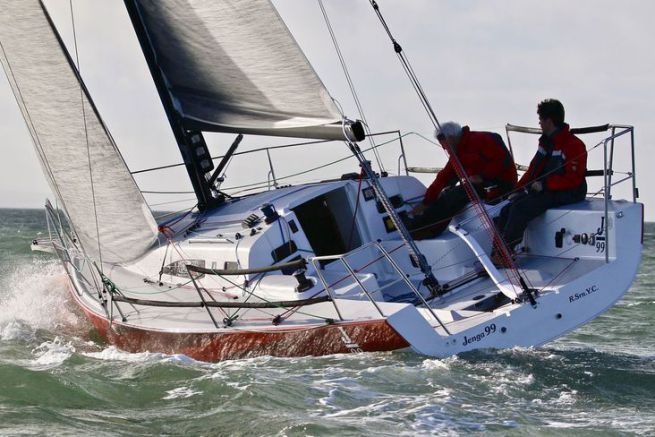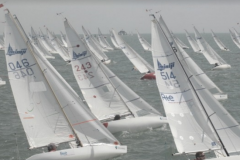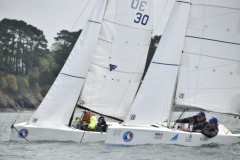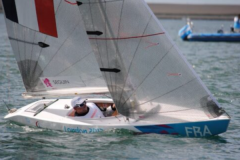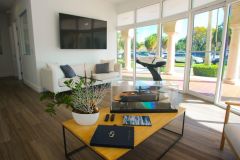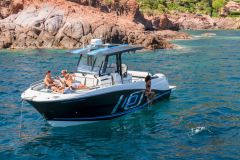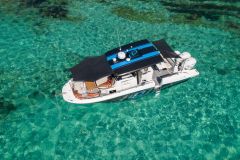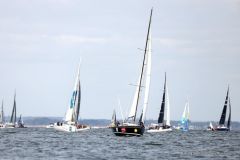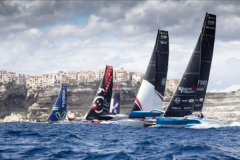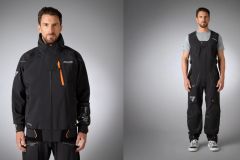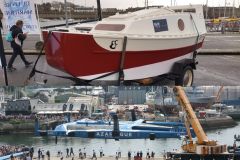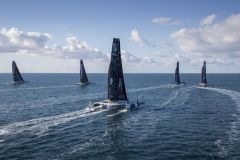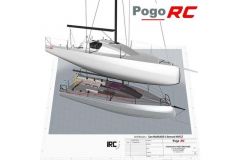The J99 is a multi-purpose boat between regattas and cruises, respecting a certain architectural tradition of the brand. It does not give way to the lively bilges unlike all contemporary couriers and cruisers. But, after all, roundness has never stopped giving power to the hulls of sailing yachts.
In addition, like all good IRCs, its line is characterized by a low vault on the back of the hull and a brion that takes the bow out of the water. This artificially reduces the waterline length, which is favourable for the rating.
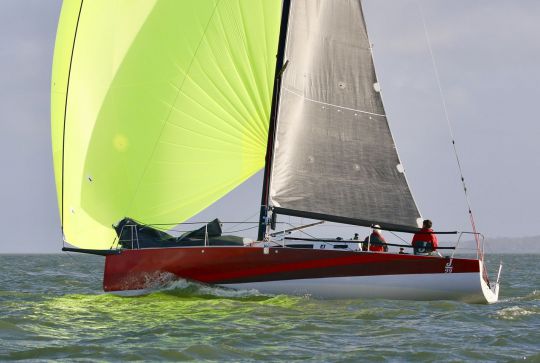
More versatility
The J/99 has a conservative hull design that is consistent with iRC requirements . JBoats have a reputation for high performance upwind and downwind. But to meet the offshore and short-handed sailing programme they were designed for, they needed more downwind versatility and better control.
So the architects have moderately widened the hull in order to gain stability and lift. At the cost of a slight increase in drag, the boat gains a little more power.
The back lines are also slightly flatter, the goal is to make the surfing go smoothly, long lasting and with better control.
Yield offshore
Although JBoats are renowned for their elegant moderate freeboard, on the J/99 it is relatively higher than the rest of the range. Indeed, to go out to sea, you have to gain in comfort at sea and in safety. Some basic options such as the bisafans will be perfectly adapted to offshore use.
Customize your boat according to your program
Depending on your programme, several configurations are available to optimise your boat: mono or bisafrican, bulb keel or straight keel, symmetrical or asymmetrical spinnaker. You will thus be able to adapt your J/99 to your main use: crewed or double, wide or coastal.
As standard, the J/99 is equipped with an aluminium mast, but you can choose a carbon profile as an option. Be careful however with the through-mast which will probably let some water through over time, but it allows you to reduce the size of the profile (therefore its weight) and thus gain in stability.
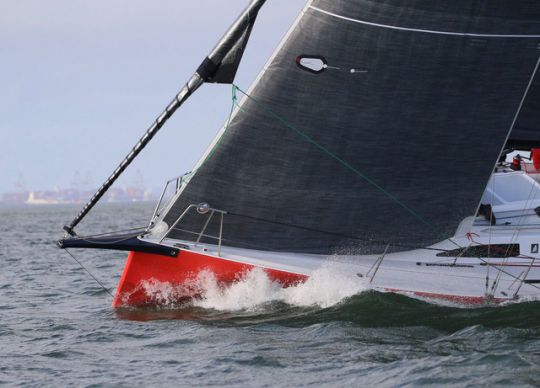
In navigation
Although JBoats have the atypical feature of racing between 3 buoys under asymmetrical spinnaker, for short-handed offshore races, the yard recommends the symmetrical spinnaker. Indeed, as the J/99 is not a gliding boat, the best VMG will be obtained downwind. So with a symmetrical spinnaker it will be easier to maintain this point of sail during long voyages under autopilot.
You can also choose a small fixed (but removable) bowsprit. The lateral holding will certainly be excellent, considering the geometry of the spar. You can therefore rig a code 0 or a gennaker and get the best out of it.
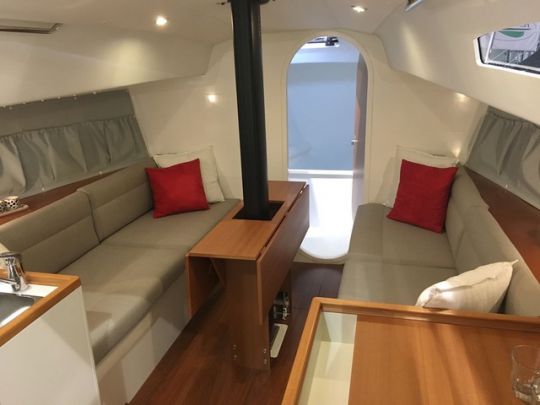
Layout and finishing
Inside, there's no liner, so the deck hardware bolts are visible. While this is convenient for maintenance and weight reduction, be careful with your heads. The interior aesthetics are clear and there is a feeling of modernity and luminosity.
The headroom is correct and the layout is comfortable for offshore racing. There are two cabins at the stern (you can sleep upwind) and a sail locker at the bow equipped with a toilet. A fairly simple L-shaped galley with a two-burner stove, an icebox and some storage space take place on the port side. The chart table, facing in the direction of travel, is opposite on the starboard side. It is spacious enough to use a computer with routing software. During the regatta, beware of the sharp angles of the joinery, which can catch the sail bags
In the saloon, behind the seats, the planks are covered with end caps instead of the traditional wooden ones. It is quite light and hides the lack of finishing of the planking, but it doesn't seem very practical, as the opening is narrow.
Without being stripped down like its direct competitors, the functional layout will be user-friendly for family weekends.
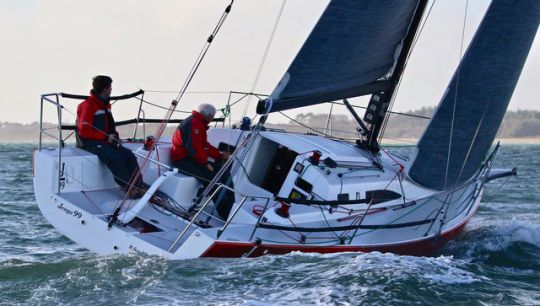
Cockpit
There's no doubt about it, we're on a sailboat made for sailing. The deck plan of the J/99 has been optimised to facilitate manoeuvres with a reduced crew, the main adjustments are accessible from the helm station. The deck fittings, running and standing rigging are of high quality. The genoa or spinnaker sheeting winches are placed next to the helmsman, a guarantee of efficiency in regattas. This arrangement is just as judicious when cruising, as the crew will no longer think that they are systematically preventing you from trimming the boat's sails.
The cockpit offers a good compromise between full or double crew.
In conclusion
Infusion manufacturing is serious. In order to face the open sea and big swells, the bulkheads are laminated to the bottom of the hull and the roof, which guarantees a real rigidity of construction.
In this category of IRC racer, the quality of finish is not always there. But we don't really judge an IRC racer by the quality of his coatings, but by his race results.
Without going into the excesses of the competition, with the J/99 we should not look too much into the corners at the risk of being disappointed. However, this level of finish means that the boat doesn't weigh too much (a few kilos) and is designed to perform well downwind, while guaranteeing a cost price that is not too high.
It appears that among the new dual IRCs, J/99 is one of the lightest and least expensive.
